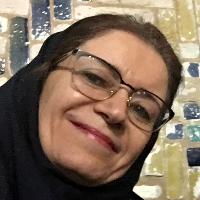مقالات رزومه امین محمدی
-
هدف این مطالعه بروز رسانی و بهبود استاندارد ملی ایران در زمینه ارزیابی عملکرد انرژی ساختمان ها از طریق مقایسه آن با استاندارد بین المللی LEED است تا از این طریق نقاط قوت و ضعف شاخص های آن مشخص و اصلاح گردد. برای این منظور یک ساختمان اداری دولتی در شهر تهران به عنوان نمونه موردی انتخاب گردید. برای ارزیابی عملکرد انرژی این ساختمان مطابق با دستورالعمل استاندارد لید، ابتدا همه اجزاء و تجهیزات آن بر اساس استاندارد ASHRAE 90/1 در نرم افزار Design Builder مدل سازی و شبیه سازی شد. سپس با استفاده از این نرم افزار، دو مدل اولیه و پیشنهادی استاندارد اشری برای ساختمان مذکور استخراج شد و مصرف سالانه انرژی و هزینه آنها با یکدیگر مقایسه گردید. نتایج بدست آمده از شبیه سازی نشان می دهد که مدل پیشنهادی اشری از ساختمان مذکور سالانه 31/5 درصد در هزینه مصرف انرژی صرفه جویی به عمل می آورد و می تواند 13 امتیاز از 18 امتیاز استاندارد LEED در بخش عملکرد انرژی را دریافت نماید. سپس این مدل پیشنهادی اشری با استفاده از استاندارد ملی ایران برای تعیین معیار مصرف انرژی و دستورالعمل برچسب انرژی برای ساختمان های غیرمسکونی مورد ارزیابی قرار گرفت. از آنجا که مصرف سالانه انرژی مدل پیشنهادی اشری از ساختمان اداری مذکور در این مطالعه 73 kWh/m2 است، مطابق استاندارد ملی، شاخص نسبت انرژی (R) برای این ساختمان کمتر از یک بوده و در رده بندی مصرف انرژی، برچسب رده (A) را دریافت می نماید. نتایج این تحقیق نشان می دهد که برای دریافت بالاترین امتیاز LEED در بخش عملکرد انرژی یک ساختمان اداری، استفاده از استانداردهای بسیار بالا در طراحی ساختمان ضرورت دارد و استاندارد مذکور در محافظت از انرژی و جلوگیری از انتشار دی اکسید کربن و حفظ محیط زیست نسبت به استاندارد ملی ایران پیشرو است. پیشنهادات این مطالعه برای بهبود استاندارد ملی در زمینه ارزیابی عملکرد انرژی ساختمانهای اداری و همطراز شدن با استاندارد لید در این زمینه شامل کاهش 23 درصدی شاخص مصرف انرژی ساختمان غیرمسکونی ایده آل در اقلیم شهر تهران و بهبود این شاخص در دیگر اقلیم های کشور می باشد.
کلید واژگان: استاندارد ملی ایران, استاندارد بین المللی LEED, عملکرد انرژی ساختمان, ساختمان های اداری تهران}The aim of this study was to compare the Iranian National Standard (INS) with LEED, a valid international standard, in the field of energy performance evaluation of buildings to show the strengths and weaknesses of INS and then improve and update it in this area. For this purpose, a government office building in Tehran was selected as the case study. To evaluate the energy performance of this building in accordance with the guideline of LEED standard, at first all its components and equipment were modeled and simulated in Design Builder software based on the ASHRAE standard 90.1. Then, the baseline and proposed models of the ASHRAE standard were configured for the case building, and their annual energy consumption and cost were compared with each other. The simulation results showed that the proposed model of the case building can save 31.5% annually the cost of energy consumption, and can achieve 13 out of 18 points of LEED standard in the category of energy performance. Afterwards, this proposed model of ASHRAE was evaluated by INS to determine the energy consumption criteria and energy label guidelines for non-residential buildings. As the annual energy consumption of the proposed model for the case building in this study was 73 kWh/m2, the energy ratio index (R) for this building, based on INS, was less than one that received label A in energy rating. Findings of this research revealed that in order to receive the highest LEED score in the category of energy performance for an office building, it is necessary to use valid standards, as LEED is far beyond INS in energy conservation, prevention of carbon dioxide emissions, and environmental protection. To improve INS in the category of energy performance for office buildings and to be in line with the LEED standard, this paper recommends a 23% reduction in the energy consumption index of ideal non-residential buildings in Tehran, and also improvement of this index for the other climates in Iran.
Keywords: Iranian National Standard, LEED international standard, Energy Performance of Building, Office Buildings of Tehran} -
This paper aims to investigate the improvement of the energy efficiency of typical apartment buildings in the hot and humid region of Iran by applying passive and cost-effective solutions. For this purpose, a residential building, that reflects the current typology, is selected in Bushehr, Iran, and its annual energy consumption is explored using electric and gas bills. Then, a primary and calibrated model of the building is made using a real occupancy schedule and hourly weather data of Bushehr in Design Builder Software to simulate its energy performance. Considering the architectural design of the baseline model and using passive solutions (including low-E glazing, thermal insulation of external walls, roof and ceilings, and pre-heating of domestic hot water), a developed model is made. The simulation results indicate that the annual carbon dioxide emission and energy consumption of the developed model is reduced by 18.7% and 20%, respectively. These passive solutions can be used to improve the energy efficiency of existing buildings to achieve low Carbon buildings and neighborhoods in this part of Iran. This study also proposed a new reference for the annual energy consumption of low-energy houses in the hot and humid area of Iran and the Persian Gulf region (75-76 kWh/m2/Year). Moreover, the economic analysis in this study demonstrates that the above-mentioned passive solutions will be cost-effective if the government subsidies for the residential buildings’ energy use are eliminated in this region.Keywords: Energy efficiency, passive Solutions, hot, humid climate, Energy simulation, Cost-Effectiveness}
-
This study aims to use vernacular climatic solutions (VCS) of traditional dwellings of Bushehr in common residential buildings of this city in southern Iran and answer to the question that “What is the effect of VCS in terms of energy consumption in these buildings?”. This research was conducted on two levels. At the first level, after selecting an existing model of common residential buildings and short-time field measurements from local climate throughout the year, the collected data was used in simulation and some changes in terms of improvement in shading, natural ventilation and insulation of external walls and roof as vernacular climatic strategies were made in this building. At second level, the proposed models of common residential buildings were offered and the data collected at the first level was used in their simulation in two states of with and without using VCS. All models were simulated with the Design Builder software under natural ventilation conditions in moderate periods of the year while split air-conditioning systems were used during hot and humid periods. The findings showed that in the existing model, discomfort hours, cooling energy consumption and CO2 production reduced by 54 percent, 44 percent and 22 percent, respectively. In the proposed models, these values showed a decrease by 10 to 20 percent, 42 percent and 32 to 34 percent, respectively. It is also predicted that using the VCS in common residential buildings of Bushehr, could reduce the energy consumption of each household by 3500 kWh per year.
Keywords: Vernacular climatic solutions, hot, humid climate, energy consumption, common residential buildings} -
ایجاد تراس های چوبی یا شناشیرها از جمله تدابیری است که برای سایه اندازی بر روی بازشوهای غربی ساختمانها در بافت قدیمی شهر بوشهر مورد استفاده قرار گرفته اند. این سایه بانها علاوه بر نقش سایه اندازی، از جمله آرایه های معماری سنتی بوشهر نیز بحساب می آیند اما عملکرد سایه اندازی آنها در بعدازظهرها، از اردیبهشت تا آبان ماه، ناقص بوده و نمی توانند سایه مناسب را برای بازشوهای غربی فراهم نمایند. این مقاله با هدف اصلاح و بهبود عملکرد سایه اندازی شناشیرهای ضلع غربی و با تکیه بر تحقیقات میدانی و شبیه سازی رایانه ای و داده های یک ساعته مربوط به تابش خورشید در طول سال نگاشته شده است. نتایج بدست آمده نشان می دهد که عملکرد شناشیرهای اصلاح شده به روش نقاب سایه الگی، به طرز چشم گیری بهبود یافته و استفاده از آنها را در معماری و سیمای شهری معاصر بوشهر امکان پذیر می سازد.
کلید واژگان: سایه اندازی شناشیرها, بازشوهای غربی, روش نقاب سایه, معماری بومی بوشهر}The invention of Shenashirs is one of the methods that has been used for shadowing on the windows of a building in west direction in old and traditional part of Bushehr.In addition of shadowing role, these shades are also the monumental elements of the vernacular architecture of Bushehr but their function in the afternoons;from May to November; is not correct and they can’t provide suitable shadow for west windows.This article has been written with the aim of correction and optimization in the shadowing function of Shenashirs through computer simulation and field research in Bushehr.The findings show that the function of optimized Shenashirs by the use of shading mask method is promoted increasingly and the use of these elements is strongly possible in contemporary architecture and urban aspect of Bushehr.Keywords: shadowing of shenashirs, west openings, shading mask method, Bushehr vernacular architecture}
- این فهرست شامل مطالبی از ایشان است که در سایت مگیران نمایه شده و توسط نویسنده تایید شدهاست.
- مگیران تنها مقالات مجلات ایرانی عضو خود را نمایه میکند. بدیهی است مقالات منتشر شده نگارنده/پژوهشگر در مجلات خارجی، همایشها و مجلاتی که با مگیران همکاری ندارند در این فهرست نیامدهاست.
- اسامی نویسندگان همکار در صورت عضویت در مگیران و تایید مقالات نمایش داده می شود.




